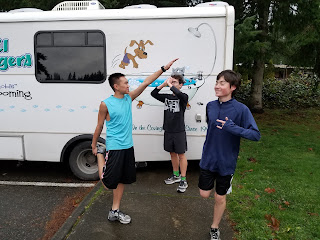Making
sure you’re hydrated and nourished while on a hike is essential to having a
successful experience. As noted by Jason Stevenson in the book, The Complete
Idiot’s Guide to Backpacking and Hiking, things that are high in fat and protein
are ideal, since your body makes twice the amount of energy from the calories
of those foods, as opposed to how much energy you would get from carbs,
(Stevenson 187). In specific, things like, chocolate, cheese, pepperoni,
salami, apples, pears, and oranges. Not only is it important to the general
functioning of your body on a hike, but it’s always a good idea to make sure
you have enough in case of an emergency. Extra energy/ protein bars, and plenty
of water is fitting for this situation, (Stevenson 109). On my most recent
hike, about 5 miles, I decided to just bring a few protein bars, oranges, and
some cheese to eat on the way. 5 miles is a relatively short hike, so there wasn’t
too much of a worry of getting too hungry or not having enough energy in my
body to continue.
“Day- hikers don’t require as many calories as backpackers,
but they should still pack high energy foods for the trail. The easiest way for
hikers to boost their energy levels- as crazy as it sounds- is to increase the
percentage of high- fat foods in your trail diet. After all, eating more food
isn’t the best option when you need to carry everything you consume,”
(Stevenson 110). This information was good to know and something I had never
heard before. I found that it was pretty helpful and really does make sense
when you put it into perspective. When you have to carry everything that you
bring with you on the trail, you would want to make sure that it’s light and as
minimal as possible, so you’re not lugging around pounds of food. When you
bring snacks that are high in fat, protein, and calories, you’re getting all
the necessary nutrients, minus the weight of it all. Overall, this book shared
some really helpful tips regarding this subject! What are your favorite snacks
to bring on a hike?
Thanks
for reading!
Stevenson, Jason. The Complete Idiot's Guide to Backpacking and Hiking. Alpha Books, 2010.



















